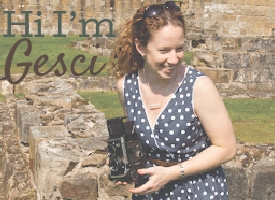Thursday was Museum Day for us. We saw Foam, the photography museum (which had a fascinating exhibit of images from the New York Times Magazine), the Van Gogh Museum, Rembrandthuis, and the Anne Frankhuis.
The Van Gogh Museum is similar to the Picasso museum in Barcelona, in that it displays a chronological progression of his work, emphasizing the early pieces. It, too, is missing some of the most well-known paintings, such as Starry Night and Self-Portrait with Bandaged Ear; but that's standard for any major artist's collective display. It was interesting to read about his self-promotion and constant failure; it did make me wonder how that contributed to the degree of his mental illness overall. We didn't buy tickets for any of these museums in advance, but had no trouble getting right in to any of them.
We did buy our tickets for the Anne Frankhuis in advance, and, upon seeing the line snaking around the building, were quite glad we did. It is a powerful place, and I highly recommend any visitor to Amsterdam take the time to see it. I haven't read her diary since I was 9 or 10, but Paul read it just a couple of years ago. I wish I'd read it closer to our trip, but the museum does a good job describing the house as she knew it, the life they led during hiding, and offers pertinent excerpts from her diary throughout the house.
On to the Rembrandthuis; the only one to allow pictures!
The museum is set up in the house Rembrandt lived in from 1639-1656, and has been re-furnished and re-decorated as closely to his residency as possible.
I love the detailing on the tile work!
Rembrandt's printing press. I thought it was interesting that he made most of his own prints, contrary to artists with apprentices and workshops that did that for them.
Windows from the landing overlooking the ground floor room and front door.
The largest, brightest room in the house was his studio, and I was envious immediately! A spacious, airy room with incredible natural lighting, any artist would kill for that set-up!
The room was redecorated based on a self-portrait he painted in this room.
Stove in the studio.
Rembrandt's collection of still-life artifacts. A thorough catalogue of his possessions was made in 1656, when the artist went bankrupt. This catalog both aided in the re-furnishing of the house and gives us a clear reason as to why an artist who was successful in his own time went bankrupt. Most of Rembrandt's money went into funding his collection; some of the rare items (particularly African items like spears and shields and natural items such as tortoiseshells and taxidermied exotics) would have been extremely costly for him to own.
An etching of a windmill scene.






















No comments:
Post a Comment
Thanks so much for stopping by! I can't wait to read your comment!